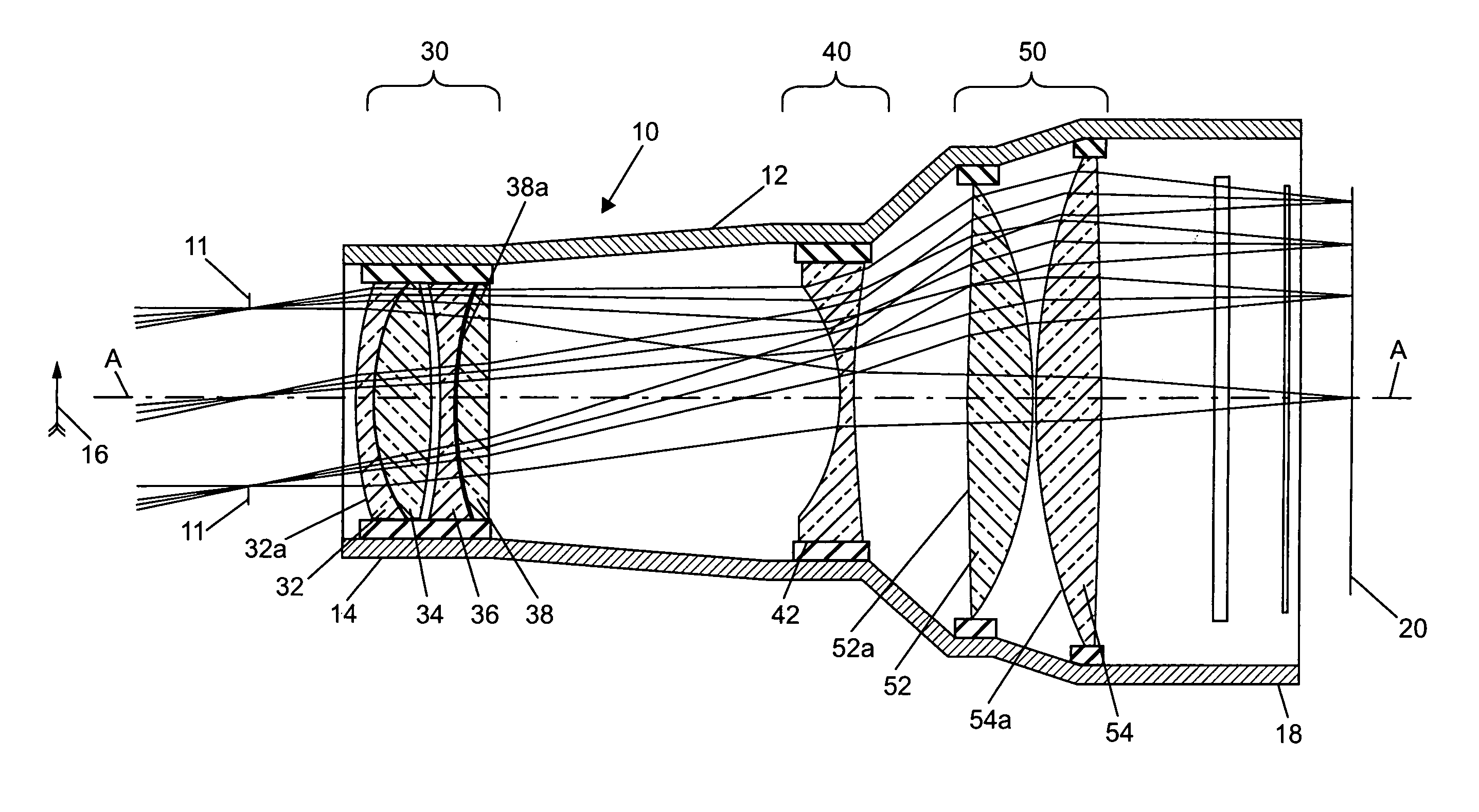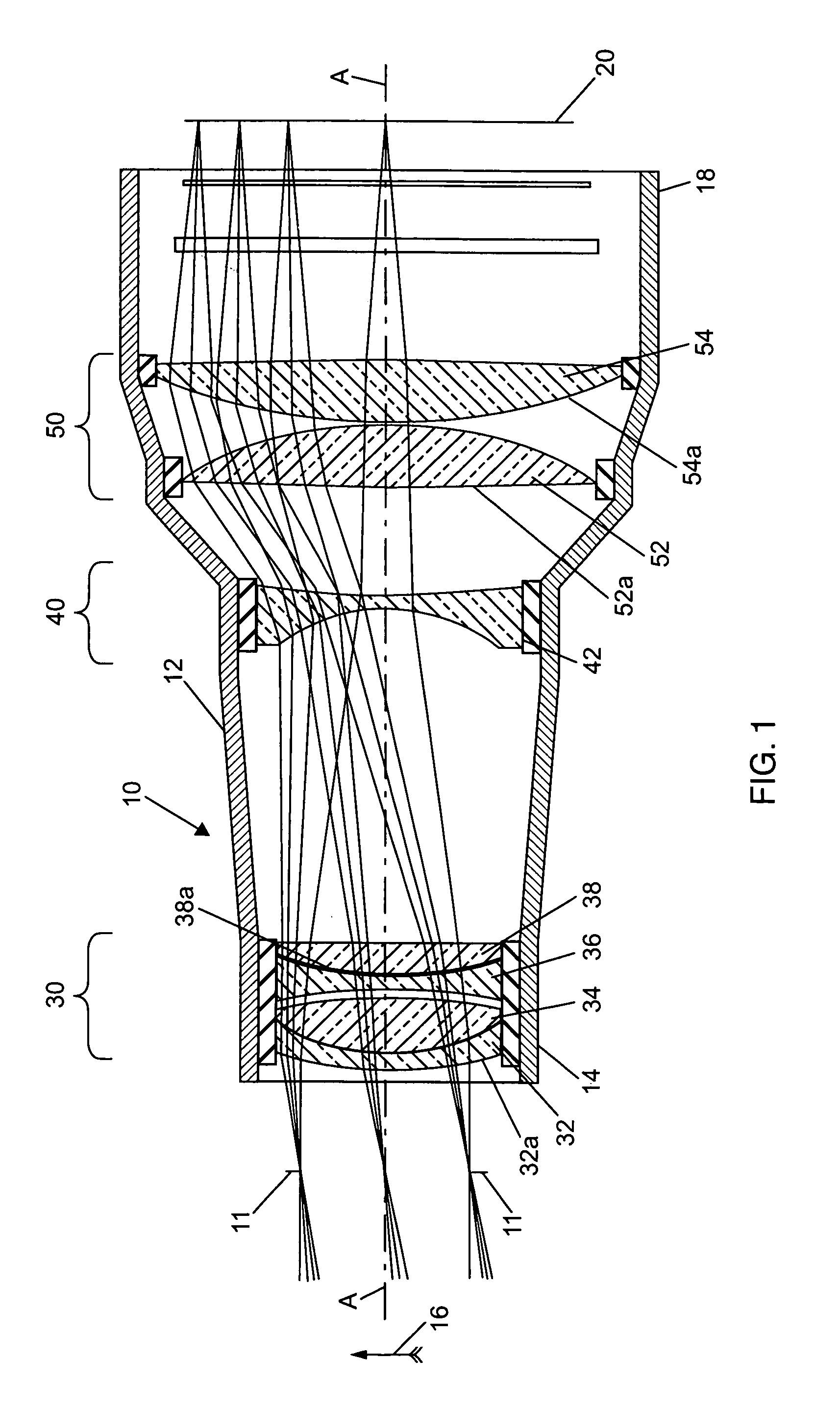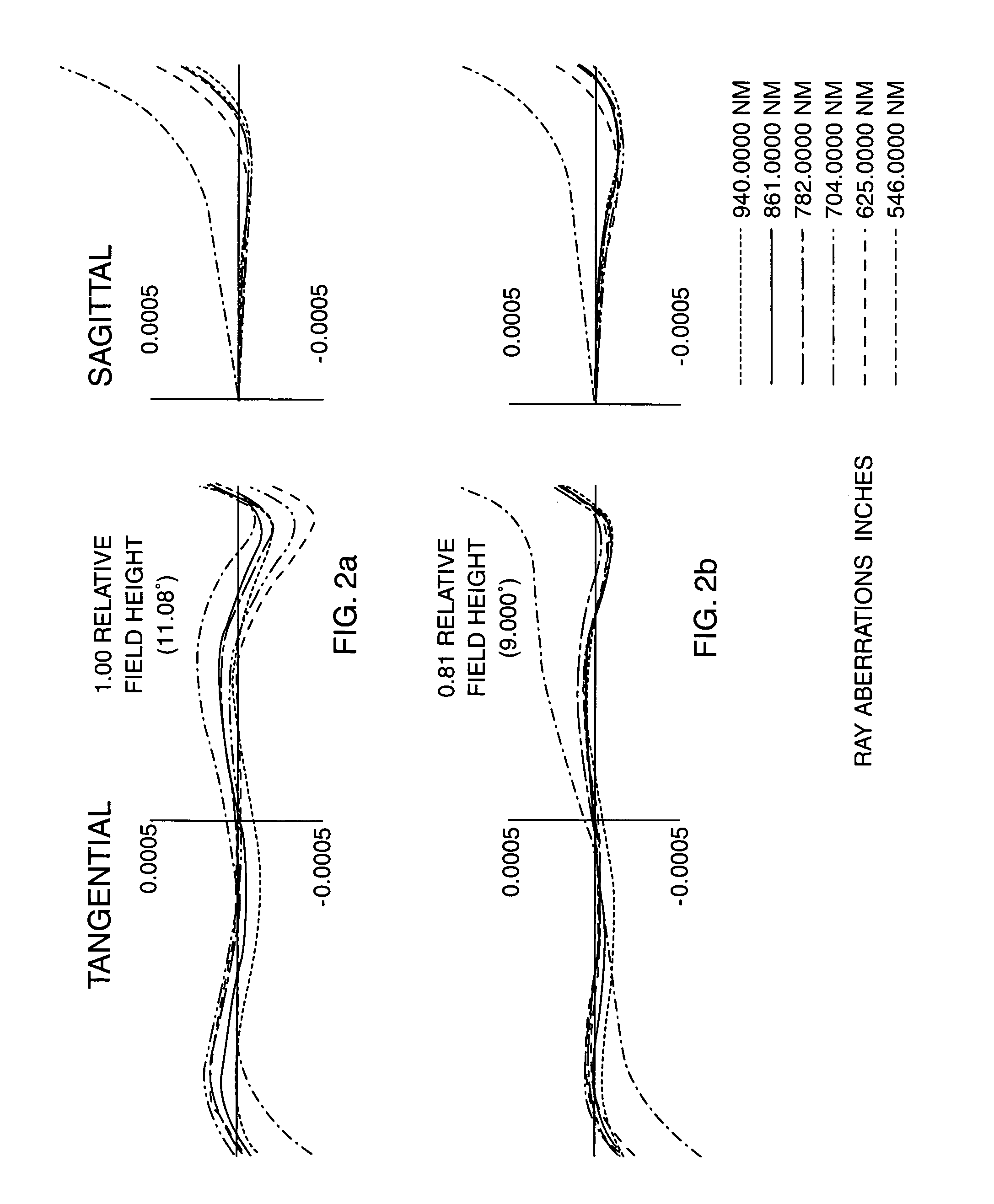Wideband apochromatic lens system
a wideband, apochromatic technology, applied in the field of optics, can solve the problems of complex lens assembly, high cost, color fringes at the edges of projected images, and high susceptibility to glass obsolescen
- Summary
- Abstract
- Description
- Claims
- Application Information
AI Technical Summary
Benefits of technology
Problems solved by technology
Method used
Image
Examples
first embodiment
[0043]FIG. 1 shows an apochromatic lens system 10 according to the invention. The system 10 is configured for use with an external aperture stop 11.
[0044]The lens system 10 basically includes a lens barrel 12 having an axis A-A. The barrel 12 is supported by a bracket or other structure not shown in FIG. 1, so as to face a distant object 16 a true and clear image of which is needed for purposes of imaging or projection. The image of the object 16 is formed onto an imaging surface 20 that is aligned with a back end 18 of the barrel. The surface 20 may incorporate, for example, a number of charge coupled devices (CCDs) mounted in a focal plane array (FPA) for converting the image into corresponding electrical (e.g., digital) signals. See the mentioned U.S. Pat. No. 5,333,076 all relevant portions of which are incorporated by reference. In other applications, the imaging surface 20 may constitute a direct viewing surface or screen.
[0045]A first optical group 30, a second optical group ...
second embodiment
[0063]FIG. 6 shows an apochromatic lens system 110 according to the invention. The system 110 is configured for use with an internal aperture stop 111.
[0064]The system 110 includes a lens barrel 112 having an axis A′-A′. The barrel 112 is supported by a bracket or other structure not shown in FIG. 4 so as to face a distant object 116 a true and sharp image of which is needed for purposes of imaging or projection. The image of the object 116 is projected onto an imaging surface 120 that is aligned with a back end 118 of the barrel. The surface 120 may, for example, incorporate a number of CCDs mounted in a focal plane array for converting the object image into corresponding electrical signals, or constitute a direct viewing surface or screen.
[0065]A first optical group 130, a second optical group 140, and a third optical group 150 of optical elements are mounted inside the lens barrel 112 in the stated order from the front end 114 toward the rear end 118 of the barrel, in alignment w...
third embodiment
[0081]FIG. 11 shows an apochromatic lens system 210 according to the invention. The system 210 is configured for use with an internal aperture stop 211. Parts of the system 210 that correspond to those of the system 110, have the same reference numerals increased by 100.
[0082]The lens system 210 also requires only six optical elements that may be formed from only three different types of glass. For example:
[0083]
Glass MaterialSourceOptical ElementsNLAF2SCOTT236SLAL54OHARA232, 242EADF50HOYA234, 238, 252
[0084]Further, the following relationships among the optical groups 230, 240, 250 and their constituent optical elements have been found to allow the lens system 210 to perform well over a wide band as shown in FIGS. 12 and 13.
F′I / F′II>2.5;
1<V1 / V2≈V5 / V6<1.2;
0.7V1 / V2) / (V3 / V4)<0.9;
0.25P1 / ΔP2)(ΔP3 / ΔP4)<0.55
where:
[0085]F′I and F′II are the focal lengths of optical groups 230 and 240, respectively;
[0086]V1, V2, V3, V4, V5 and V6 are the Abbe numbers for the optical elements 232, 234, 236...
PUM
 Login to View More
Login to View More Abstract
Description
Claims
Application Information
 Login to View More
Login to View More - R&D
- Intellectual Property
- Life Sciences
- Materials
- Tech Scout
- Unparalleled Data Quality
- Higher Quality Content
- 60% Fewer Hallucinations
Browse by: Latest US Patents, China's latest patents, Technical Efficacy Thesaurus, Application Domain, Technology Topic, Popular Technical Reports.
© 2025 PatSnap. All rights reserved.Legal|Privacy policy|Modern Slavery Act Transparency Statement|Sitemap|About US| Contact US: help@patsnap.com



